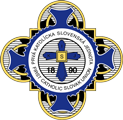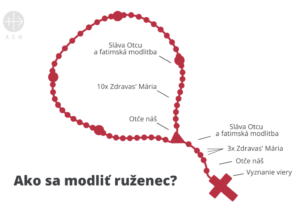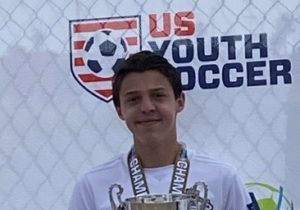75th Anniversary-Slovak National Uprising Memorial Weekend
Slovenské Národné Povstanie (SNP)
By Kathryn Tatko
During August 24-25 a day-and-a-half conference and remembrance of the Slovak National Uprising (SNP) was held in the Twin Cities of Minnesota. My husband, Jack Richards, and I attended the conference. Following are some of the highlights. Several of the presentations dealt with the personal stories of people who experienced this turmoil, their sacrifices, and their courage.
During the first afternoon, the conference was held at the Minnesota Genealogy Society Conference Center in Mendota Heights, about 15-20 miles outside of St. Paul. The main event was a viewing of Dušan Hudec’s documentary film about the Uprising. The film showed many of the survivors talking about what happened to them and how they felt they were poorly treated by the Czechoslovak government after World War II.
The all-day Sunday program was held at the Czech and Slovak Sokol Hall, not far from downtown St. Paul. John Palka, grandson of Milan Hodža, was the first speaker. He spoke on how the Slovak State (Slovenský štát) came to be and why it provoked an uprising.
The seeds of the Uprising were sown when Germany invaded the Czech lands (Bohemia and Moravia), which became a German Protectorate. The Slovak State (independent and under German control) became totalitarian and nationalistic, expelling about 9,000 Czechs from Slovakia to the Czech Protectorate. Many people collaborated with the Nazis. About two-thirds of Slovak Jews were shipped out of Slovakia; the government paid the Germans 500 Reichsmarks per person and for “shipping costs.” Most of these Jews did not survive. The Slovak State also did not want Hungarians in the country. It sent 10,000 Slovak troops to support the invasions of Poland and Russia. At the start of the Uprising in 1944, 60,000 Slovak troops, 10,000 partisans, and thousands of civilians from all walks of life, secretly worked against their government. These civilians collected information, and used secret radio transmitters and other means to receive information from the West and to send information to their countrymen in exile. Many were caught by the Germans and tortured or executed.
The next speaker was Nadya Nedelsky, Chair of the International Studies Department at Macalester College. She spoke on “Nationalism, National Identity, and the Slovak National Uprising.” The Slovak State was in power 1938-39; its capitol was not Prague. The party became the nation, and the nation became the party. There was no room for dissenting opinions and no freedom for individuals – all were subordinate to the state, especially the Jews, whose properties were confiscated. Dr. Nedelsky made an interesting comment: “Some folks asked if it was Christian to kill the Jews.“
The first keynote speaker was Juraj Lepiš, an historian and researcher, at the Museum of the Uprising, in Banská Bystrica. He spoke about the importance of the Uprising after 75 years, showing 37 minutes of historic film from actual battles of the Uprising. The resistance started the moment the Slovak State was created. Very few countries recognized the Slovak state. (Thirty-three nationalities were involved in the Uprising). The communist resistance was the smallest, but the best organized. The Uprising was launched prematurely, on August 29, 1944 (it had been planned for October 1944), in response to the occupation by German troops, who were welcomed by the Slovak government. The Soviets had offered help, but the German Army wanted to slow the action of the Soviet Army. Mr. Lepiš gave a very detailed talk about the Uprising – the reasons for it, military and economic planning, military movements, territory preserved and territory lost, and the end of the resistance, when 20,000 soldiers and 12,000 partisans went into the mountains to fight a guerilla war until 1945. After the war, other Slovaks and, in 1948, the communists, went after Uprising participants, accusing them of being traitors to the communist government‘s foreign policy campaigns.
The conference continued with the awarding of the 15th annual Milan Hodža Prize, given by the Slovak Republic to four organizations and two individuals. After lunch, we saw director Dušan Hudec’s movie, “The Final Mission.” Between 1943 and 1945, 46 U.S. bombers and eight fighter aircraft crashed in Slovakia (one of the instrument panels was on display). Eighty-eight airmen were killed and 380 were captured as prisoners of war after parachuting or landing. Some crews escaped with the help of Slovak villagers and partisans.
Several speakers followed, including: Cecilia Rokusek, President and CEO, National Czech & Slovak Museum & Library, who spoke about “Keeping Our Committment to Never Forget the SNP”; Karen Varian, President, Rusin Association of Minnesota, who spoke about the role Carpatho-Rusyns played in the resistance movement; eighty-five-year-old Demeter Kokosh spoke about his experience as an 11-year old boy living in the village of Becherov, near the Polish border; and Maria Gulovich, who worked with the resistance and helped save the lives of several OSS (Office of Special Services) officers who were secretly flown into Slovakia.
The second keynote speaker was Dr. J. Luke Ryder, an historian at the U.S. Holocaust Memorial Museum. His topic was “Meaning and Learnings from the Uprising.“ He gave two examples of persons striving for human dignity, and the choices they made. One was a couple living in the mountains of Slovakia, who found a young Jewish boy, Gideon Frieder, and took him in, as 1944 was worse for Jews than earlier. His father, a rabbi, had disapeared in Bratislava and his mother and sister were killed by Allied bombing in Bratislava on June 16, 1944. The couple were aware of the risk they were taking. The second example was of Ladislav Nižňanský, a Slovak collaborator and war criminal who wanted to deport Jews. He chose to collaborate rather than go to a camp in Germany.
Dr. Ryder then talked about the legacy of the Uprising. On August 25, 1945, on its first anniversary, the view was that the Uprising had restored respectability to the communist party and the democracy. After 1948, the communist government used the events of 1944 to accuse political enemies of being traitors to the Uprising, and to promote their own economic agenda and pro-Soviet foreign policy campaigns. After 1989, the SNP became about “openness” and unity with the rest of Europe, although some nationalist elements renewed nostalgia for the Tiso regime. The symbolism of SNP is greater than the Uprising itself.
If anyone would like more information, please contact me (ktjr89@verizon.net), as I have a list of the conference sponsors and a YouTube URL to view the complete talks of four of the participants. Jack and I certainly learned a great deal more than we knew about the SNP, why it happened, and some of its participants.
Kathryn Tatko is a former president of the Slovak American Society of Washington D.C.



